-
Original Article
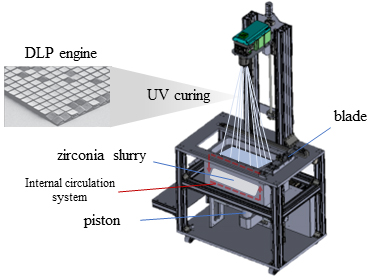
- Fatigue Strength and Microstructural Evaluation of Zirconia Implant Specimens Fabricated Using a Large-area Additive Manufacturing System
- Su-Min Cho, Jai-Young Koak, Seong-Kyun Kim, Ji-Man Park
- Purpose: This study evaluated the mechanical stability of zirconia specimens fabricated using a large-area additive manufacturing (AM) system, with a focus on …
- Purpose: This study evaluated the mechanical stability of zirconia specimens fabricated using a large-area additive manufacturing (AM) system, with a focus on their clinical applicability as dental implant materials.Materials and Methods: Zirconia specimens were manufactured using a digital light processing (DLP)-based vat photopolymerization system equipped with a large build platform (685 mm × 350 mm × 20 mm). The material used was 3 mol% yttria-stabilized tetragonal zirconia polycrystal (3Y-TZP). Surface morphology was assessed using scanning electron microscopy (SEM). Fatigue strength was evaluated in accordance with the International Organization for Standardization (ISO) 13356:2015 under cyclic loading between 32 and 320 MPa at a frequency of 12 Hz for 1,000,000 cycles (R-ratio = 0.1). Tests were conducted at room temperature with specimens immersed in normal saline.Results: SEM analysis revealed no surface defects or cracks. High-magnification images showed densely packed zirconia grains, most of which were smaller than 600 nm. All specimens (n = 5) withstood fatigue testing without any signs of fracture or cracking under the applied conditions.Conclusion: Zirconia specimens fabricated using the large-area AM system satisfied the ISO 13356:2015 mechanical requirements, particularly fatigue resistance. These findings demonstrate that the system can produce zirconia dental implant components with adequate structural stability, supporting its clinical applicability and potential for high-throughput production. - COLLAPSE
-
Original Article
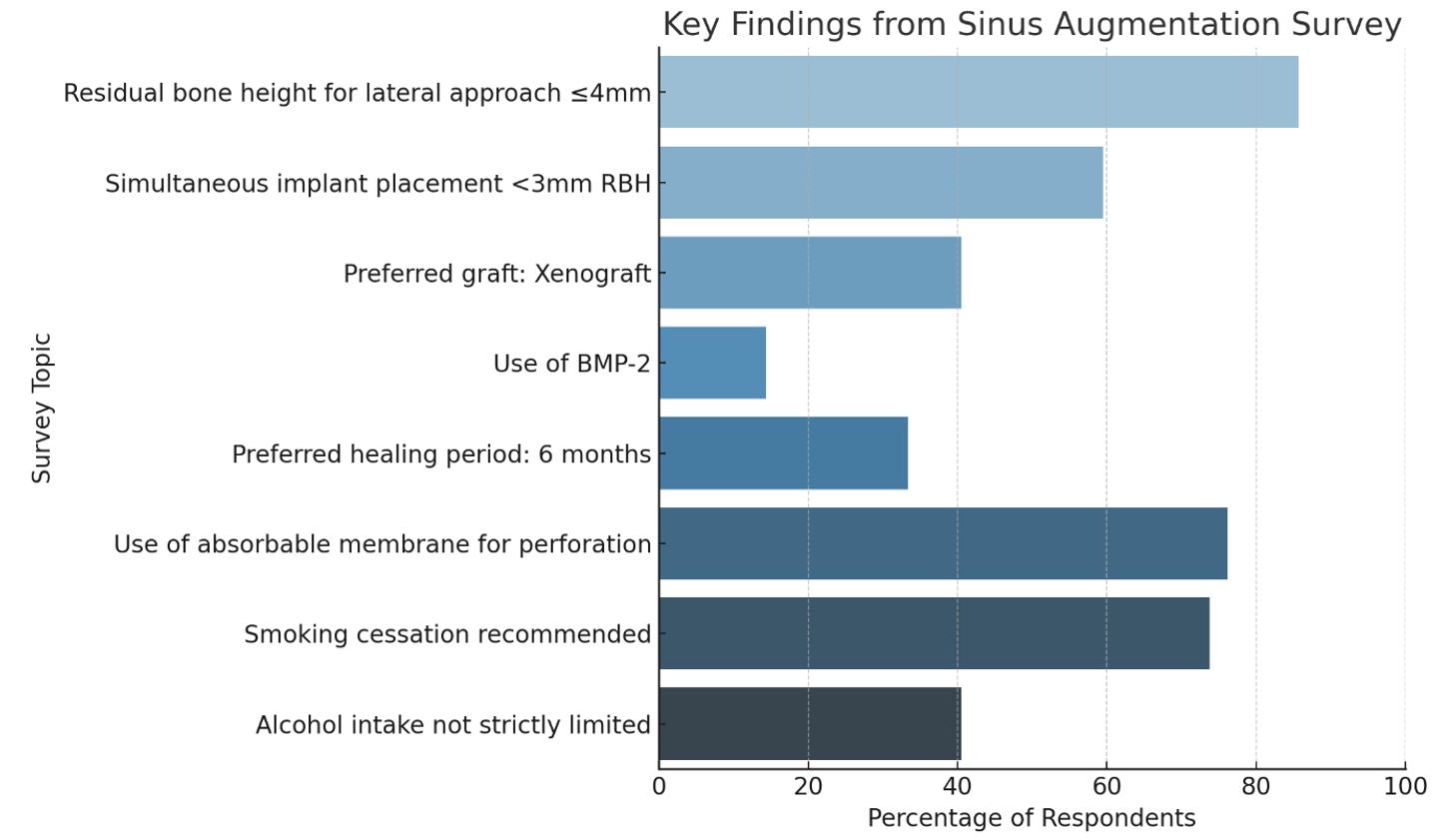
- Survey of Sinus Floor Augmentation Among Oral and Maxillofacial Surgeons
- Ikhyeon Kim, Seunghun Baek, Kang-Min Ahn
- Purpose: This study aimed to investigate the clinical preferences of experienced Korean oral and maxillofacial surgeons (OMFS) regarding lateral sinus augmentation.Materials and …
- Purpose: This study aimed to investigate the clinical preferences of experienced Korean oral and maxillofacial surgeons (OMFS) regarding lateral sinus augmentation.Materials and Methods: A structured 12-item multiple-choice questionnaire was distributed to 42 OMFS in Korea, aged 36‒57 years, all with >10 years of clinical experience and working in university hospitals. The survey assessed key aspects of lateral sinus augmentation, including annual case volume, residual bone height (RBH) thresholds, instrument preferences, implant timing in low-bone conditions, graft material selection, use of growth factors, healing periods, membrane perforation management, preferred implant types, and attitudes toward smoking and alcohol use. Results: Among 42 respondents, 28 (66.7%) reported performing 1‒50 sinus grafts per year. For lateral sinus approach initiation, the most common threshold was 4 mm RBH (17/42, 40.5%), followed by 3 mm (12/42, 28.6%). The most preferred instrument for lateral wall osteotomy was the low-speed carbide or diamond bur (29/42, 69.0%), with piezoelectric devices being the second most common choice. Regarding simultaneous implant placement when RBH <3 mm, 25 respondents (59.5%) reported proceeding with placement, whereas 17 (40.5%) preferred staged procedures. Xenografts were the most frequently used graft material (17/42, 40.5%), often in combination with others. Only six clinicians (14.3%) reported using BMP-2 or similar biologics. The most preferred healing period was 6 months (14/42, 33.3%), followed by 5 (5/42, 11.9%) and 3 (5/42, 11.9%) months. For large sinus membrane perforation (>1 cm), 24 respondents (57.1%) repaired and proceeded, whereas 15 (35.7%) decided based on the case. The most common membrane repair method was the use of absorbable membranes (32/42, 76.2%). Internal connection implants were the most widely adopted system (35/42, 83.3%). For smoking patients, 14 respondents (33.3%) performed surgery regardless of cessation, whereas a similar number recommended cessation prior to surgery. Regarding alcohol intake, 18 respondents (42.9%) recommended temporary abstinence, whereas 17 (40.5%) did not consider it a considerable factor.Conclusion: Korean OMFS tend to prefer simultaneous implant placement, even with RBH <3 mm, particularly when using xenografts, to minimize surgical stages. Smoking cessation is commonly emphasized, whereas attitudes toward alcohol are more lenient. These findings reflect evolving practices within existing protocols and underscore the need for broader, multidisciplinary research to establish a more comprehensive clinical consensus on sinus augmentation. - COLLAPSE
-
Clinical or Case Report
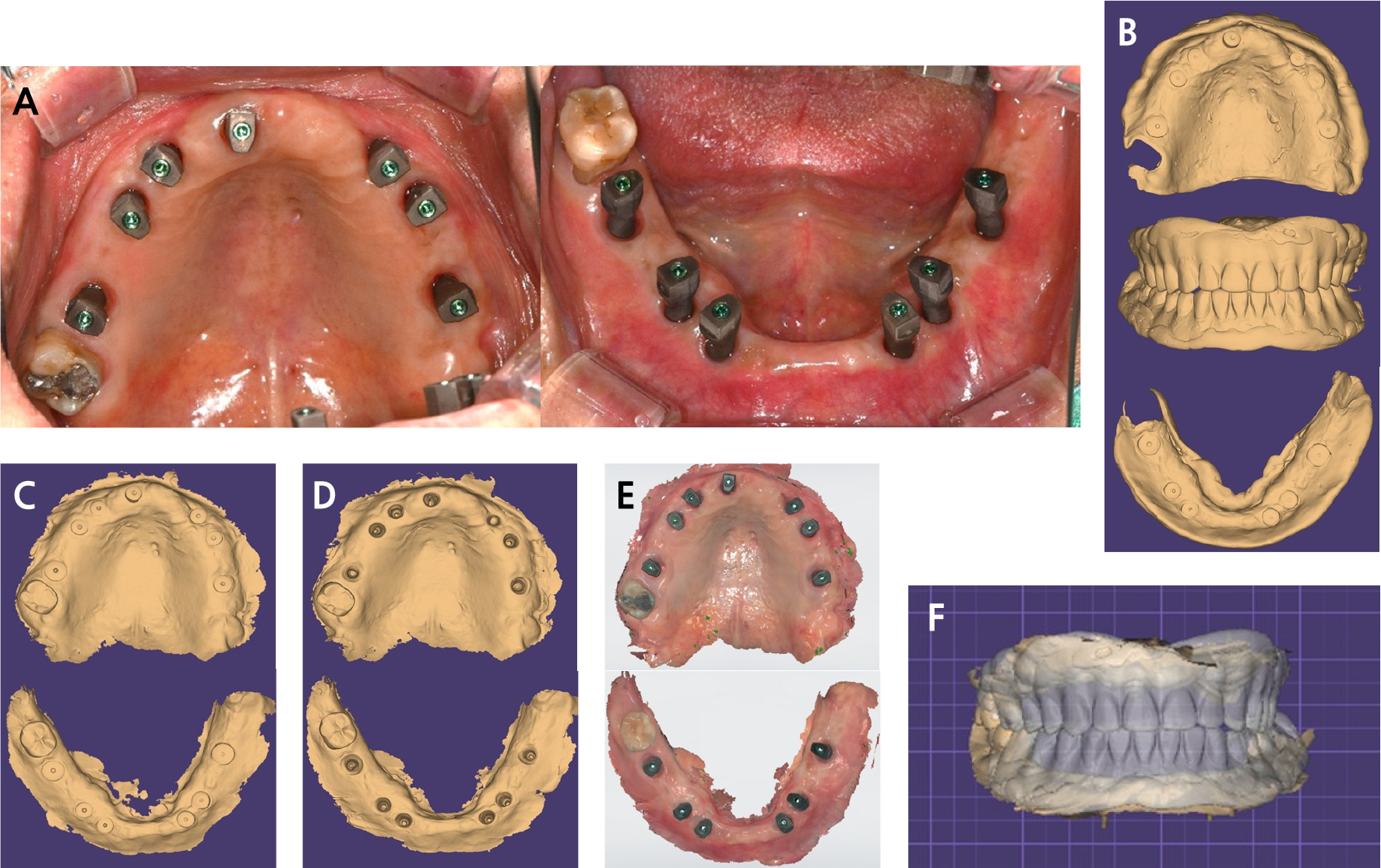
- Digital Technology-assisted Complete Mouth Rehabilitation Based on Traditional Diagnostic Principles
- Sang Yeun Han, Jai-Young Koak, Seong-Kyun Kim, Ji-Man Park
- The prosthetic rehabilitation of completely edentulous patients with dental implants remains a significant clinical challenge. Digital technology is now utilized from the …
- The prosthetic rehabilitation of completely edentulous patients with dental implants remains a significant clinical challenge. Digital technology is now utilized from the early stages of treatment planning, enabling diagnostic wax-ups, guided implant placement planning, and the maintenance of vertical dimensions in existing temporary dentures. Prostheses can now be fabricated using digital impression techniques, such as intraoral scanning and jaw motion tracking, which replace conventional methods. Furthermore, digital tools enable precise assessment of occlusal relationships after prosthesis delivery. This case report describes the successful rehabilitation of a patient using a combination of analog and digital techniques. Initially, a diagnostic guide surgery was performed for implant placement. During the impression-taking phase, digital technologies, including intraoral scanning, were employed, confirming the feasibility of a fully digital workflow. Using facial scanning, the final restoration was simulated to predict patient outcomes. Mandibular movements were measured, and computer-aided design and computer-aided manufacturing restorations were designed on a virtual articulator through digital facebow transfer. This integrated approach yielded a predictable, esthetically pleasing, and functionally stable outcome, demonstrating the synergy between digital innovation and fundamental prosthodontic principles. - COLLAPSE
-
Clinical or Case Report
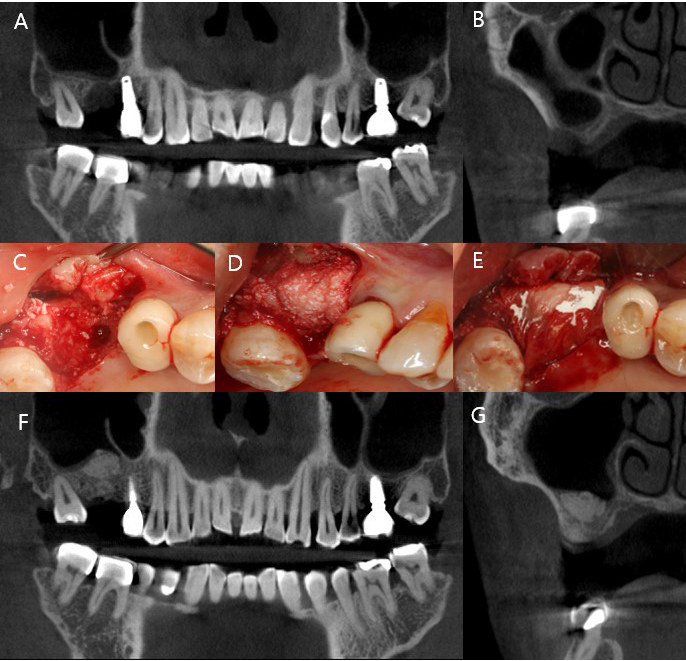
- Minimally Invasive Transcrestal Sinus Floor Elevation in Compromised Maxillary Extraction Sockets: A Case Series
- Yun-Jeong Kim
- This report presents a novel clinical approach to transcrestal sinus floor elevation in erratically healed maxillary posterior extraction sockets with severely limited …
- This report presents a novel clinical approach to transcrestal sinus floor elevation in erratically healed maxillary posterior extraction sockets with severely limited residual bone height (< 1 mm). Three patients underwent delayed implant placement following simultaneous sinus membrane elevation and guided bone regeneration (GBR) within compromised extraction sites. Despite the absence of sufficient bone, crestal access to the sinus was achieved without lateral window opening or excessive malleting. Membrane elevation was facilitated through gentle osteotome probing and hydraulic pressure, followed by passive insertion of a xenograft material. Simultaneous GBR was performed at the extraction sites using a particulate xenograft material and resorbable collagen membrane. Postoperative cone-beam computed tomography (CBCT) revealed an hourglass-shaped configuration of the regenerated bone, indicating successful reconstruction of both the sinus and alveolar bone. Implant fixtures were placed in all patients with satisfactory initial stability and maintained long-term function without adverse events during follow-up periods of 13–63 months. This approach reduces procedural invasiveness, minimizes unnecessary sinus exposure, and promotes bone regeneration by leveraging the healing potential of limited spaces. In the presence of favorable anatomical and healing conditions, vertical bone reconstruction can be accomplished despite the absence of residual crestal bone. - COLLAPSE
-
Clinical or Case Report
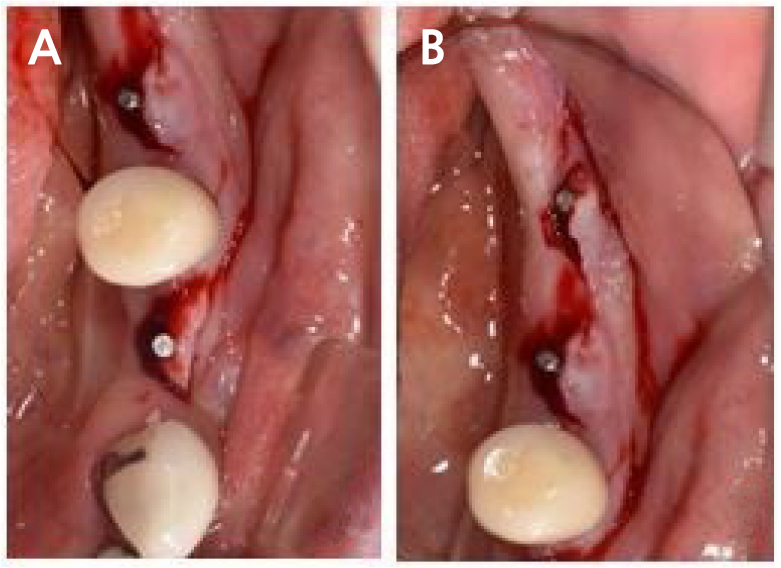
- Minimally Invasive Implant Treatment Using Small Incisions
- Eun-Taek Lee, Hanee Bae, Seung-Ki Min, Je Won Wang, Yeong Kon Jeong
- Flapless implant surgery has gained increasing popularity due to its advantages, including preservation of the periosteal blood supply, minimization of soft and …
- Flapless implant surgery has gained increasing popularity due to its advantages, including preservation of the periosteal blood supply, minimization of soft and hard tissue trauma, and reduction of patient discomfort. However, conventional flapless techniques are regarded as limited in cases involving narrow alveolar crests or inadequate keratinized tissue, due to restricted visibility and limited access. This case report presents a modified flapless approach that overcomes these challenges through minimally invasive techniques. A 1 mm guide pin was inserted into the alveolar bone to serve as a radiographic and intraoral reference, facilitating accurate angulation and depth control without requiring a surgical stent. At a site with insufficient keratinized gingiva, a small semilunar incision was made slightly lingual to the crest to reposition the soft tissue without flap elevation. Additionally, an implant fixture with variable machined surface lengths was selected to accommodate crestal bone morphology and soft tissue thickness, eliminating the need for bone grafting. At the 4-year and 4-month follow-up, the site exhibited stable crestal bone and firm keratinized gingiva, with no evidence of inflammation. This technique offers a simple and reproducible strategy for extending the indications for flapless implant surgery, even in anatomically compromised patients. - COLLAPSE
-
Clinical or Case Report
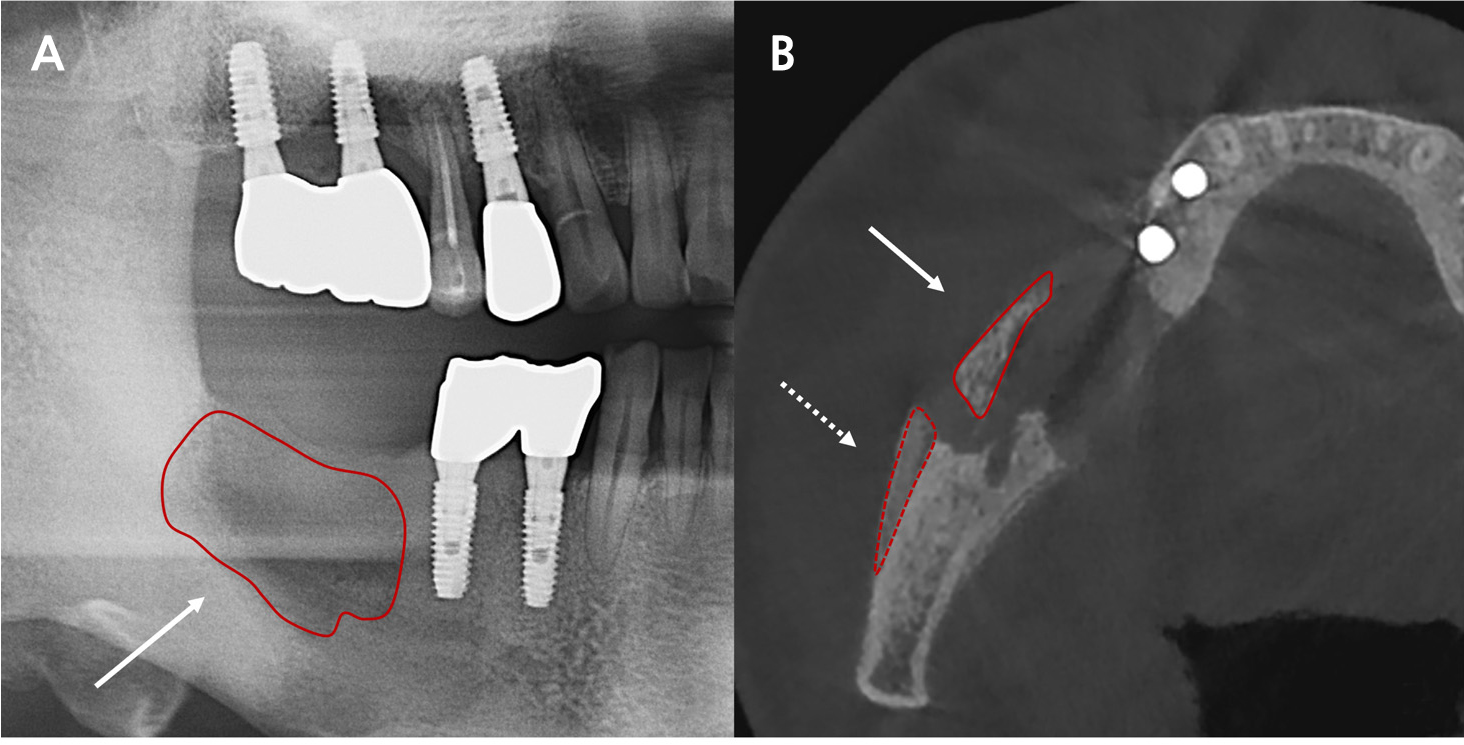
- Lenvatinib-Associated Osteonecrosis Around Long-standing Mandibular Implants: A Case Report
- Min-Jun Kang, Chaeyeon Lee, Yongjun Cho, Hyun Woong Lee, Jong-Ki Huh, Jae-Young Kim
- Lenvatinib is associated with adverse effects such as osteonecrosis of the jaw (ONJ) in patients undergoing treatment for malignancies. This case report …
- Lenvatinib is associated with adverse effects such as osteonecrosis of the jaw (ONJ) in patients undergoing treatment for malignancies. This case report presents a 56-year-old male with hepatocellular carcinoma undergoing lenvatinib therapy who presented with ONJ with significant bone destruction surrounding mandibular implants. Bone loss was extensive and thus treated with sequestrectomy and curettage. Although healing was observed initially, an additional sequestrum was observed at the 3-month follow-up. This case highlights the potential link of lenvatinib associated ONJ. Further research is required to clarify the mechanisms underlying lenvatinib-induced ONJ and to improve management strategies. - COLLAPSE
Journal Informaiton
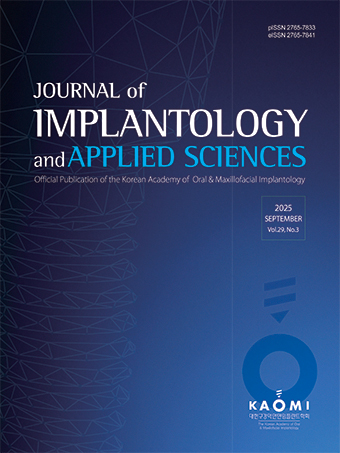 Journal of implantology and applied sciences
Journal of implantology and applied sciences
Journal Informaiton
Journal Informaiton - close
 Journal of implantology and applied sciences
Journal of implantology and applied sciences













